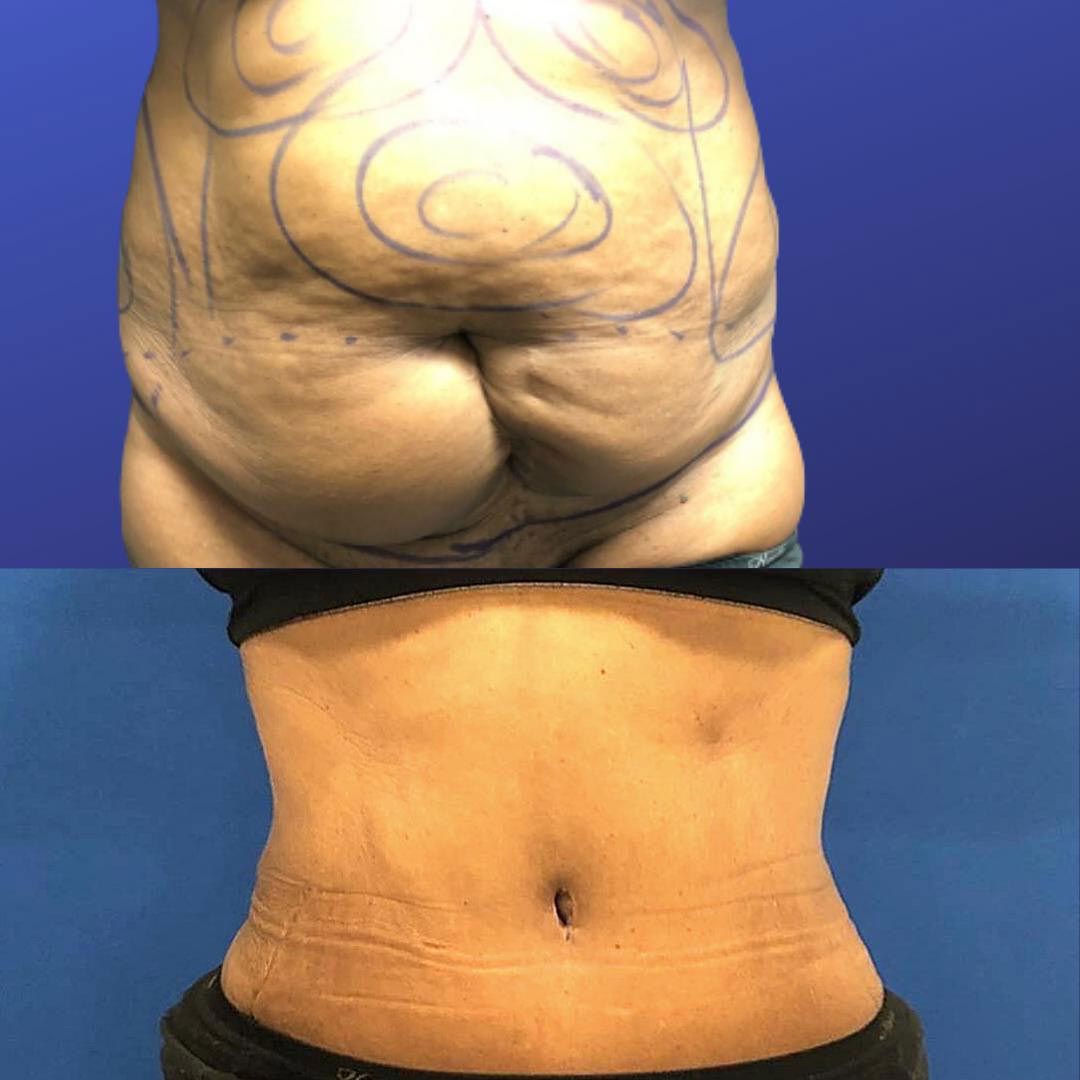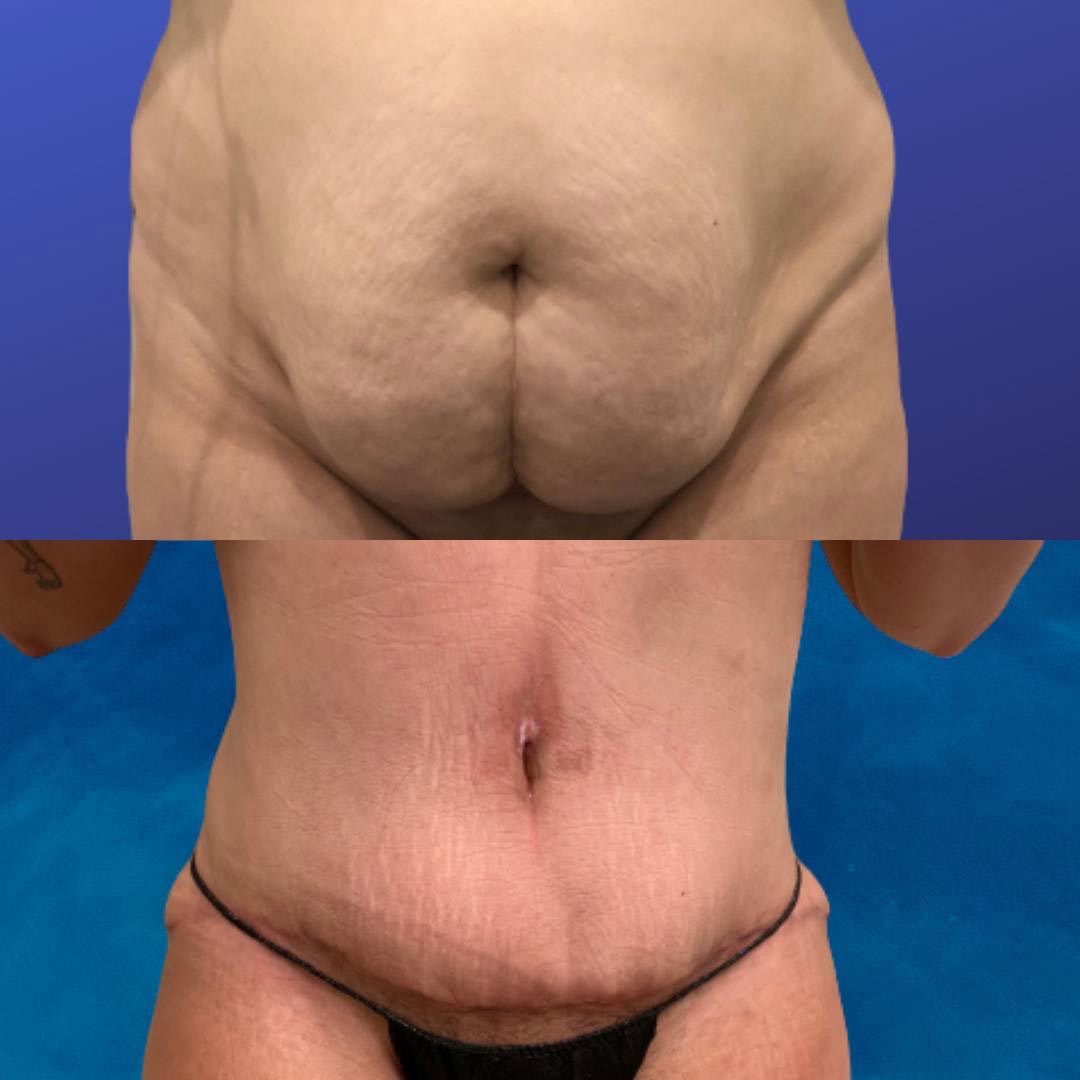Before and After


Each of us dreams of a flat and firm belly. Unfortunately, in some situations, even intense and regular exercise is not enough to achieve this beauty standard. Sadly, excess flaccid abdominal skin after pregnancy or weight loss more often than not does not shrink on its own. Some women struggling with the post-baby aftermath, the so-called abdominal rectus muscle separation, or diastasis recti, may also require surgery. Although general surgeons can eliminate the problem, plastic surgeons usually include this as a part of their tummy tuck procedure. In this and other scenarios of human life, abdominoplasty, or colloquially called a tummy tuck, is an ideal option aimed at reducing body fat and stretching the skin to improve the appearance of the abdomen and waist.
Who qualifies for the Tummy Tuck?
1. Post Pregnancy
As a result of pregnancy, there is often a considerable loss of body weight, resulting in a fold of flabby skin. Despite the use of diets and exercise, this unwanted aesthetic defect often remains. The tummy tuck procedure is then the optimal solution to the existing problem. The abdominoplasty enables straight muscle modeling, improvement of abdominal tone and shape. During the Caesarean section, the continuity of the tissues is interrupted, and thus they are weakened. In such a situation, even a proper diet and intense exercise do not give a satisfactory improvement.
2. After Significant Weight Loss
Losing unnecessary pounds is most often a process full of sacrifices and hard work. At the end of this path, despite the success, there is often an unresolved problem – excess skin on the stomach. Patients can benefit considerably from the procedure of abdominal plastic surgery. A tummy tuck removes extra skin folds and smooths the waistline leaving you with the desired flat belly.
3. After Surgeries In Abdominal Area
Abdominoplasty is often performed after procedures that have weakened the tone of the rectus abdominal muscles or led to the formation of a hernia. Studies show that after hysterectomy, up to 38% of patients experience dehiscence of the rectus abdominal fascia. Most often, these are mild cases that do not require surgical intervention. However, complaints and muscle weakness may become so severe that plastic surgery is inevitable. Previously performed surgeries can leave an unwanted visual defect in the form of a drooping skin fold or a sagging abdomen; in those cases, we recommend abdominoplasty. The procedure will allow you to get rid of excess skin and fat folds and strengthen the anterior abdominal wall.
OUR PROCEDURE FOR TUMMY TUCK SURGERY IN NEW YORK
Our complete tummy tuck in New York City involves making an incision from hip to hip just above the pubic hairline, followed by a separate incision around the navel. If the muscles are stretched in a straight line, they will be brought together and sewn together to reduce the circumference of the abdomen and strengthen the abdominal muscles, which will prevent the formation of an abdominal hernia in the future. After suturing the subcutaneous tissue and muscles, the skin is pulled down so that excess can be removed. Our NYC’s board-certified surgeon makes a small hole to sew in the belly button in a new place. Simultaneously, limited liposuction of the abdomen is performed, which allows for a better cosmetic effect. Additionally, with slight skin tension, a larger abdominal fat fold can be removed.
Mini-abdominoplasty is similar to full abdominal surgery but requires much less detachment of tissues, leaving the belly button intact. The simplified procedure is suitable for those patients who have excess skin and fat only below the navel.
Both full abdominoplasty and mini-abdominoplasty are performed under general anesthesia.
What are the risks and side effects of surgery?
Complications are rare and usually minor, but each operation carries a risk depending on the individual characteristics of the patient. All potential risks and side-effects are discussed with the patient during a consultation with our skilled plastic surgeons in NYC specialized in abdominoplasty (tummy tuck).
Occasionally, a small hematoma or a reservoir of body fluids may appear under the skin. The drain established at the time of surgery should limit the occurrence. Any subsequent fluid accumulations can often be removed at a follow-up visit using a needle and syringe. The situation when it is necessary to return to the operating room is extremely infrequent.
The abdomen after surgery will feel numb for up to six months after surgery. Sometimes this numbness is permanent. In the postoperative course, infection and skin necrosis, although rare, may occur. Rare complications associated with any surgery can happen, such as a blood clot in the leg that requires treatment (deep vein thrombosis).
How to prepare for a consultation before the procedure?
The plastic surgeon will inquire about general health and medical history: previous diseases and procedures, allergies, medications, and whether the patient smokes cigarettes. Indeed, the surgeon will want to know the reason why the patient is considering surgery. Ideally, before deciding to undergo surgery, healthy body weight should be established to minimize the risks of the procedure and obtain the best results.
How to prepare for the procedure?
The surgeon will present the possible dates of the tummy tuck surgery. For women, surgery should be scheduled up to two weeks after the last menstrual bleeding to reduce the possibility of postoperative complications. Depending on the age and general health of the patient, series of blood tests (blood count, protein level, sugar level, blood coagulability), and heart exams (electrocardiogram), or even chest X-ray should be performed.
You should avoid eating and drinking any fluids for 6 hours, or as directed by your doctor, before the planned surgery. If you smoke, quitting smoking six weeks before surgery is advised. Smoking reduces the amount of oxygen in the blood and can significantly increase the risk of complications after surgery.
The surgeon, anesthesiologist, and nurse should be informed about any medications you are currently taking, including any recreative drugs and supplements.
Medications containing acetylsalicylic acid should be discontinued two weeks before the scheduled procedure because they increase the risk of bleeding during surgery. A month before surgery, patients may also be asked to stop taking birth control pills or hormone replacement therapy. Your doctor will advise you accordingly.
You should arrange the return home since driving by yourself is certainly not an option.
What to expect after the surgery?
In the first days after tummy tuck surgery, you may feel uncomfortable trying to straighten up; it is essential to try to walk every two hours during the day and in the early evening. Staying in bed for too long increases the risk of developing blood clots. You have to gradually increase your physical activity in the next few days.
Tightening and pulling on the skin and muscles may be painful if you cough or use the toilet. You may experience some levels of discomfort for about a week, but pain medications should eliminate the ache. Drinking plenty of fluids as well as eating more fruit and high-fiber foods will help reduce constipation.
The patient may lose feeling in the abdominal area. This condition should slowly return to normal in the next few months but, in some cases, may not fully resolve.
Scars will be red for up to several months; then, they should soften and gradually fade away. Scars are also more sensitive to sunlight, so cover them to minimize sun exposure and apply protective sunscreen if necessary. You should also avoid lifting weights or vigorous exercise for six weeks after surgery.
Frequently Asked Questions about Tummy Tuck
What kind of scarring can I expect?
Abdominoplasty scars are located around the navel and above the pubic region. The scar around the navel is typically not noticeable, as it is situated within the belly button itself. The horizontal scar from the skin excision is placed in the bikini line where it can be easily hidden by clothing. The scar will curve down slightly toward the center and stretch from one side of the midsection to the other. The exact length of the scar will vary among each patient. We will work with you after the procedure to help promote a healthy and favorable healing process, ensuring your scarring is as minimal as possible.
How long does the procedure take?
The length of the procedure will vary with the addition of liposuction but tends to last between two and four hours.
What’s the difference between lipoabdominoplasty and a regular tummy tuck?
Lipoabdominoplasty combines liposuction with an abdominoplasty for a comprehensive approach to body contouring. Patients with mild to moderate excess fat that has been resistant to a healthy diet and exercise routine are good candidates for lipoabdominoplasty. For patients with loose abdominal skin and a minimal amount of fat, a traditional abdominoplasty tends to be the recommended procedure. We will determinewhich option is better for you after an in-person evaluation.
What is a mini abdominoplasty?
A mini abdominoplasty, or mini tummy tuck, is a popular procedure that targets only the lower abdomen to create a tighter, slimmer stomach. Patients with loose skin, excess fat and abdominal separation located below the navel are good patients for a mini tummy tuck. Patients with any postnatal or weight loss concerns situated above and below the navel are better candidates for a traditional abdominoplasty.
Can abdominoplasty be combined with other procedures?
Absolutely. An abdominoplasty can be part of a mommy makeover procedure that targets multiple areas for a full body rejuvenation. Abdominoplasty is commonly paired with a breast lift, breast augmentation or liposuction in other areas of the body. Let us know during your initial consultation if you are interested in additional procedures and we will create a personalized treatment plan that meets all of your needs.
